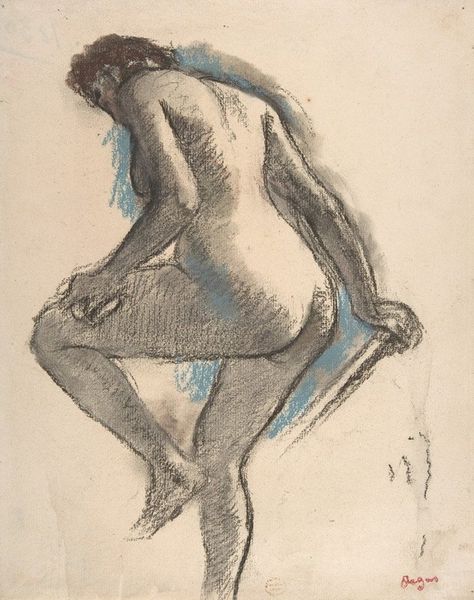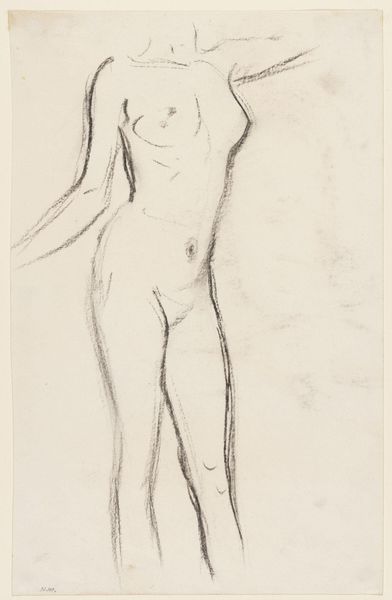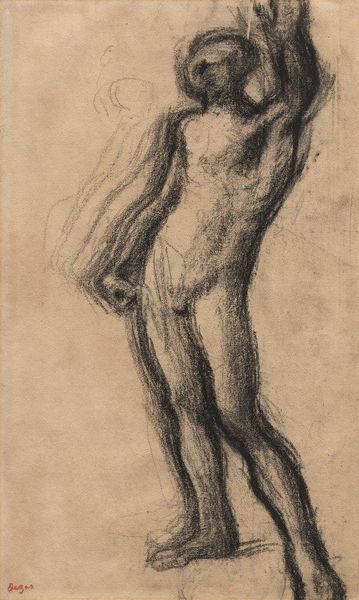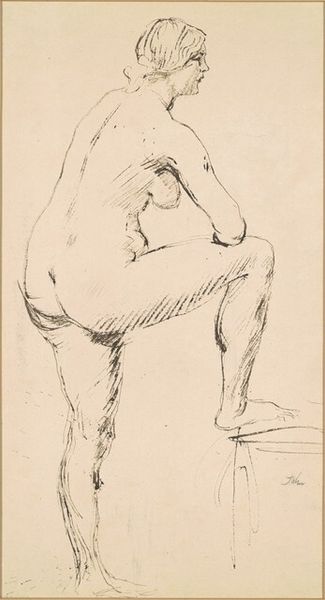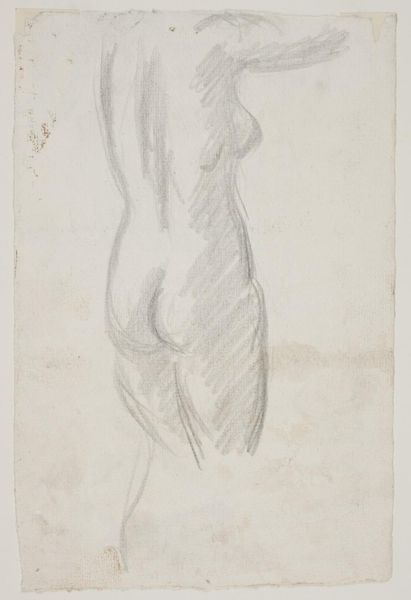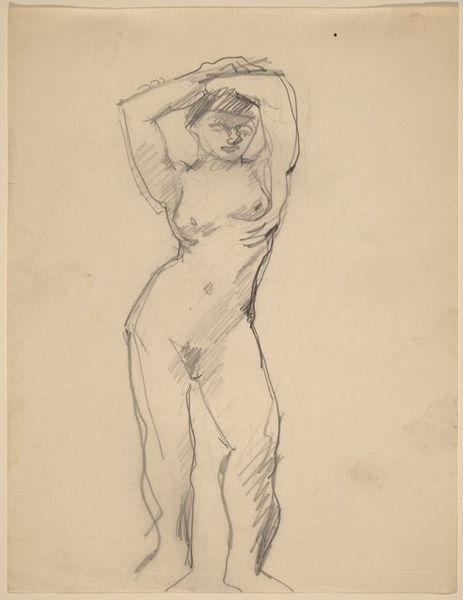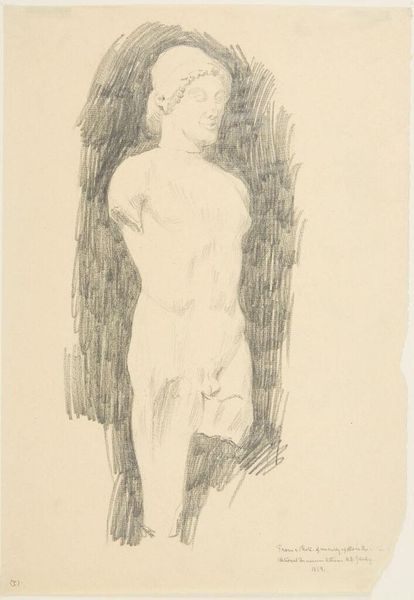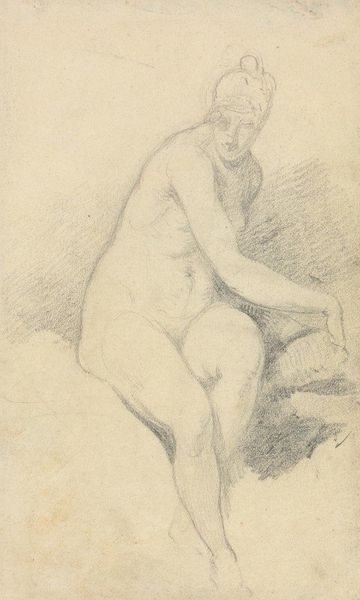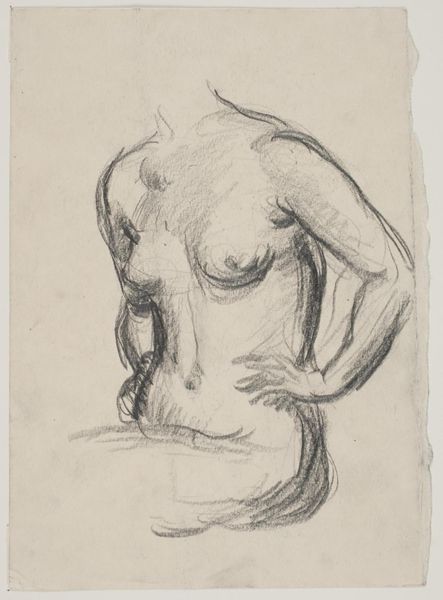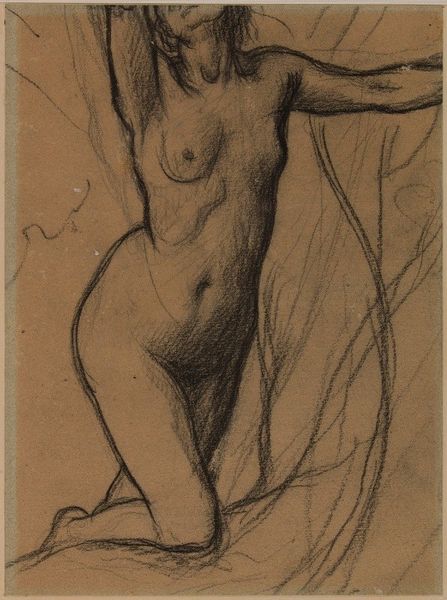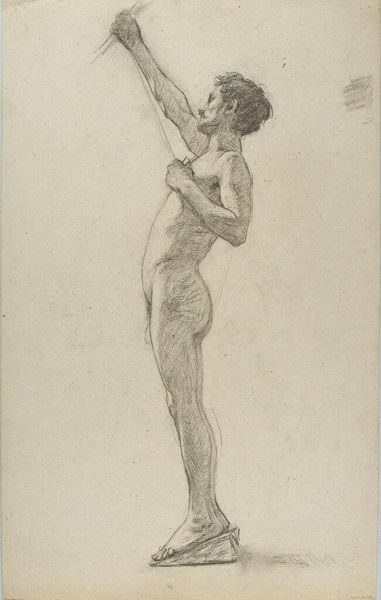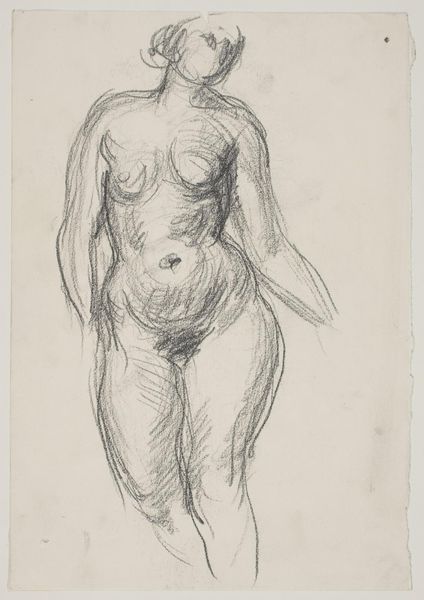
Copyright: Public Domain: Artvee
Curator: Edgar Degas's "Bather Drying Herself," created around 1883 or 1884, strikes me as almost brutally honest in its depiction of the female form. Editor: Brutal? I see a softness, almost a melancholy, in the slumped posture and the way the charcoal and pastel create this diffused light around her figure. Curator: It's the immediacy that gets me. The visible strokes, the rawness of the charcoal and pastel on paper—it suggests a quick study, less concerned with idealization than with capturing a fleeting moment. We see the labor involved in its creation. How does Degas use readily available and affordable materials to challenge the conventional notion of art? Editor: Precisely. But that fleeting moment is masterfully composed. The curve of her spine echoes the drape of the towel. And notice how the blue wash in the background serves to further highlight the warm tones of her skin? The negative space creates an intimacy and allows us to connect to her solitude. Curator: Speaking of solitude, consider the social context. During this period, depictions of women were laden with expectations of domesticity and moral virtue. Yet, Degas presents a woman entirely consumed by her own physicality. Does this representation push back against idealized views, bringing us closer to lived experience of women and their self-care labor, typically relegated to private, unglamorous spaces? Editor: That's interesting, because even though there's a lack of contextual information, you read labor into her image. She is so absorbed. Degas uses a limited palette and fragmented view point to express a world beyond realism; his attention to form invites us to meditate on themes like time, beauty, and ephemerality. Curator: I think this reflects a societal preoccupation, the availability of materials, and Degas’s own privileged background—all crucial when looking at his work and considering art’s ability to challenge those established norms of femininity, gender, class, and body politics. Editor: Whether his motivation stemmed from a political positionality or aesthetic pursuits, "Bather Drying Herself," transcends its time. Its formal strengths create meaning. Its exploration of light, shadow, form, and the very human presence that touches us viscerally, even now.
Comments
No comments
Be the first to comment and join the conversation on the ultimate creative platform.
